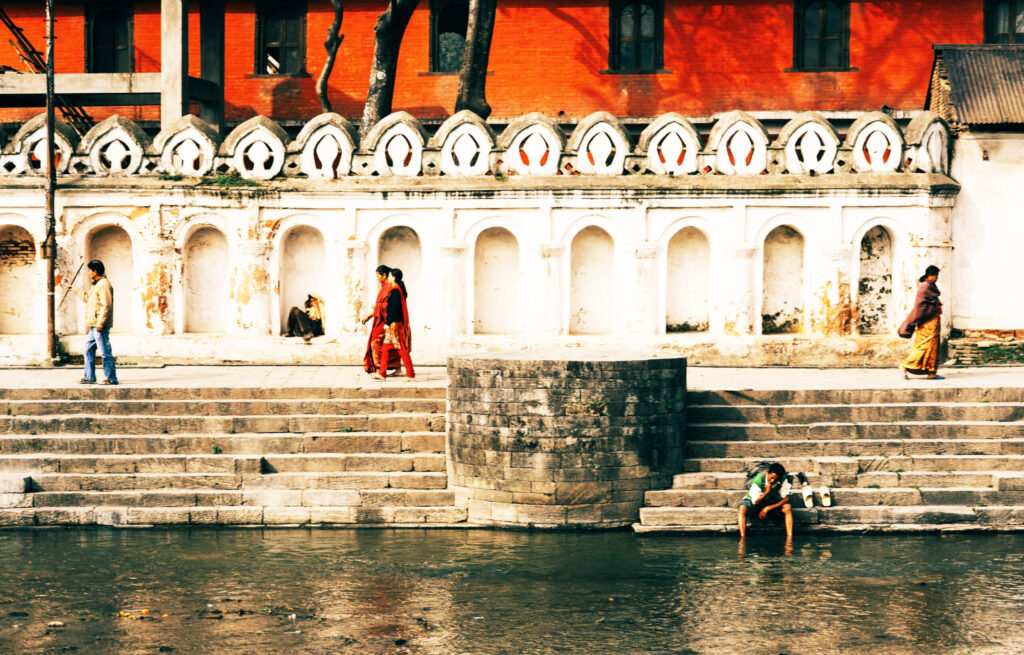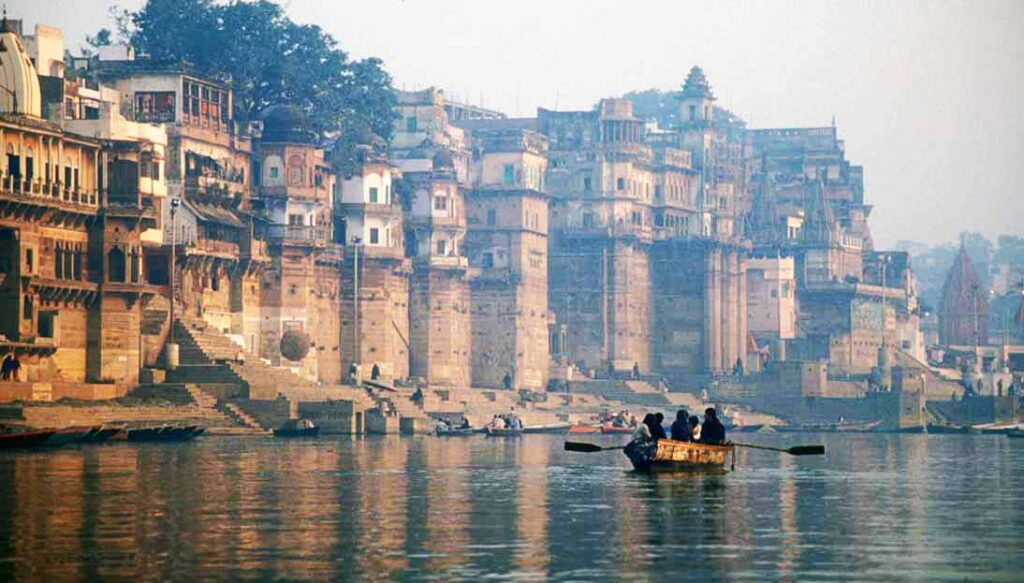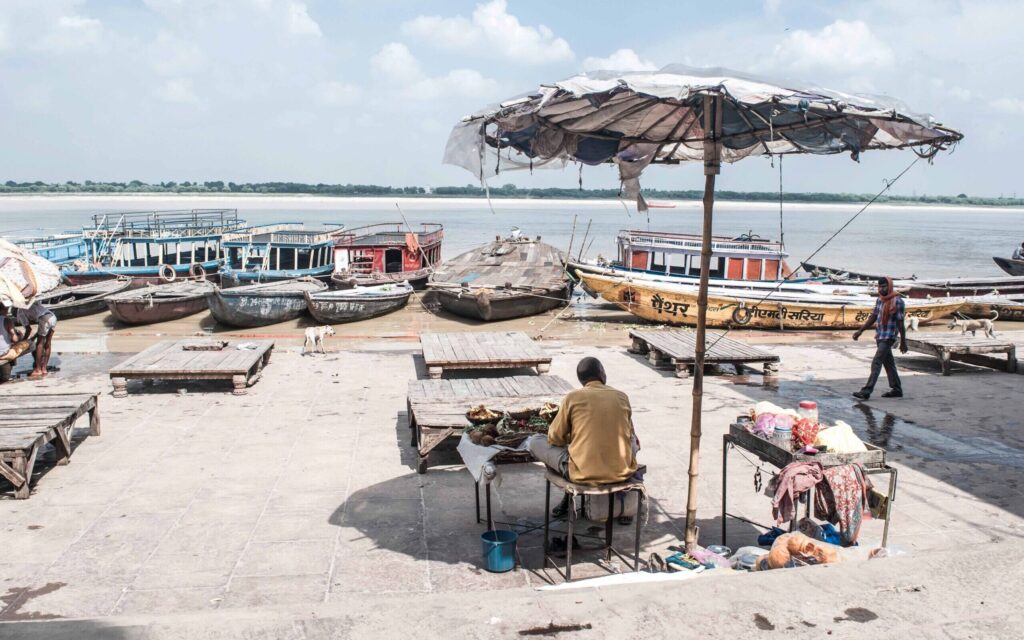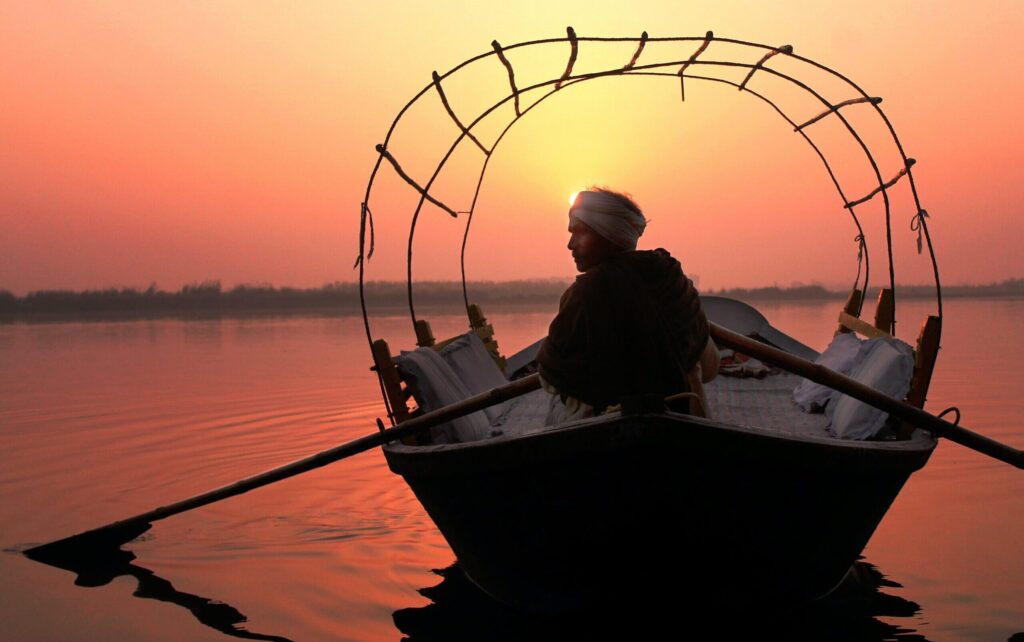
Get Your Holy Dips in the Ganges River – It’s Ganga Time
The Ganges river, also known as the Ganga, is one of India’s most important and sacred rivers. It flows through several states in North India, including Uttarakhand, Uttar Pradesh, Bihar, and West Bengal, before emptying into the Bay of Bengal.
The river has immense cultural, historical, and spiritual significance for the people of India and has played a pivotal role in shaping the country’s identity and history. The towns and cities along the river offer visitors a chance to experience the region’s heritage, history, and natural beauty.
 Here are some towns along the Ganges that are worth visiting from India’s Varanasi to Patna:
Here are some towns along the Ganges that are worth visiting from India’s Varanasi to Patna:
- Varanasi: Also known as Kashi, this is one of the oldest living cities in the world and is considered the holiest city in Hinduism. The city is known for its ghats (riverfront steps leading to the water), where pilgrims take holy dips in the Ganges. The city is also famous for its ancient temples and as a hub of classical music, art, and literature.
- Rishikesh: Located in the foothills of the Himalayas, Rishikesh is a popular destination for yoga and meditation enthusiasts. The city is also known for its suspension bridge, the Laxman Jhula, which offers a panoramic view of the river and the surrounding hills.

- Patna: Patna is the capital city of Bihar and is situated on the southern bank of the Ganges river. The town is steeped in history and is home to several ancient monuments and temples, including the Mahavir Mandir and the Patna Museum.
- Haridwar: This city is known for its Kumbh Mela, a Hindu festival held every 12 years, where millions of pilgrims dip in the Ganges. The city is also famous for its evening aarti, a ritual where devotees offer prayers to the river by lighting oil lamps and floating them on the water.
- Allahabad: Also known as Prayagraj, this city is the site of the Kumbh Mela and where the Ganges meets the Yamuna river. The city is also home to several historical monuments, including the Allahabad Fort and the Anand Bhavan, the ancestral home of the Nehru-Gandhi family.

- Kolkata: Although not located directly on the Ganges, Kolkata is a significant city that owes its existence to the river. The town was a central trading hub during the British era and is known for its colonial architecture and food, literature, and art scene.
- Kanpur: Kanpur is an industrial city located on the banks of the Ganges river in Uttar Pradesh. The city is known for its leather and textile industries and has several important historical and cultural landmarks, such as the Kanpur Memorial Church and the Bithoor Fort.
- Bhagalpur: Bhagalpur is a city in Bihar known for its silk production and historic landmarks, such as the Vikramashila University and the Ajgaivinath Temple. The city is also home to the Bateshwar Temple, situated on the banks of the Ganges river and considered one of the region’s holiest sites.
Did you know?
The Ganges river is home to the Ganges river dolphin, also known as the South Asian river dolphin. This species of freshwater dolphin is found only in the Ganges, Brahmaputra, and Meghna river systems in India, Bangladesh, and Nepal.
The Ganges river dolphin is one of the most endangered dolphin species in the world, with only around 2,000 individuals estimated to be left in the wild. The dolphins are highly adapted to living in the river’s murky waters and have a long, narrow snout that is perfect for catching fish in the riverbed.
 In Indian mythology, the Ganges river dolphin is considered a sacred animal and is believed to possess special powers that can bring good luck and fortune to those who see it.
In Indian mythology, the Ganges river dolphin is considered a sacred animal and is believed to possess special powers that can bring good luck and fortune to those who see it.
A little history:
The Ganges river has played a significant role in the history of India for thousands of years. The river is considered to be a sacred and holy river by Hindus, who believe that bathing in the Ganges can cleanse them of their sins and purify their souls.
The river is also mentioned in several ancient Indian texts, including the Rigveda, which dates back to the 2nd millennium BCE.
Over the centuries, the Ganges has been a significant trading and transportation route, linking the cities and towns along its banks.

It witnessed the rise and fall of several powerful empires, including the Mauryan, Gupta, and Mughal empires and also played a crucial role in India’s struggle for independence, with several key events, including the Dandi March and the Salt Satyagraha, taking place along its banks.
The Ganges river is still an important cultural and spiritual symbol for the people of India. Millions of pilgrims flock to the river yearly to dip in its holy waters, perform religious rituals, and pay homage to their ancestors.
Despite facing several challenges, including pollution and overuse, the Ganges remains integral to India’s identity and heritage. It continues to inspire awe and reverence in people from all over the world.


